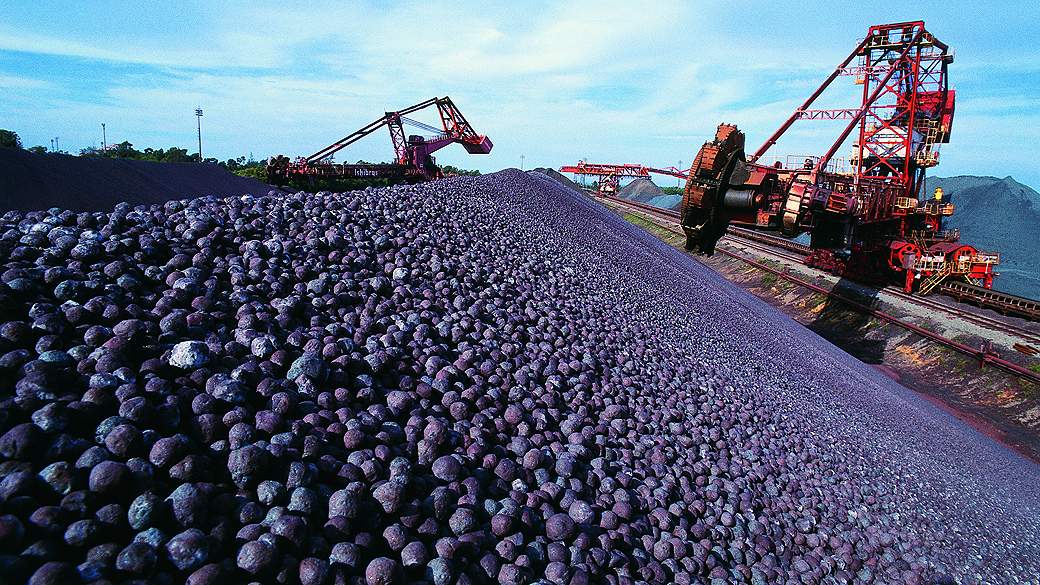RIO DE JANEIRO, BRAZIL – The government of Minas Gerais signed on Thursday a protocol of intent with South American Metals (SAM), a subsidiary of Chinese Honbridge Holdings, for the R$7.9billion (US$2 billion) construction of a mining complex in the north of the state.

Called Block 8, the project includes a 480-kilometer pipeline that will run from the mining city of Grão Mogol to Ilhéus (Bahia State), passing through 21 municipalities. With the construction of the pipeline, the total investment will increase to R$9.1 billion.
The project foresees one of the largest tailings dams in the country and is condemned by entities such as the Movement of People Affected by Dams. The company says the model is safe.
If full operation is reached, Block 8 will produce 27 million tons of iron ore per year, slightly less than Vale’s Brucutu mine, and similar to the total capacity foreseen in Anglo’s Minas-Rio project, whose logistics also depend on a pipeline.
The deposits to be explored are in the municipalities of Grão Mogol and Padre Carvalho. The complex will have an ore concentration plant, water dams and a dam with the capacity to support 845 million cubic meters of tailings.
To get an idea of the size of the project, the Vale dam at the Córrego do Feijão iron mine in Brumadinho had the capacity to store 12 million cubic meters of tailings. Its rupture on January 25th released a wave of mud that killed 249 people and left 21 missing.
The Fundão da Samarco dam in Mariana had stored 55 million cubic meters when it ruptured in November 2015.
Initially, under the responsibility of the Brazilian Institute for the Environment and Renewable Natural Resources (IBAMA), the project had its licensing discontinued. The mining part will be the responsibility of the Minas Gerais environmental authority, while the pipeline, which crosses the state border, will be licensed by IBAMA. It will be built and operated by Lotus Brasil Comércio e Logística, an independent company of SAM.
On Wednesday, entities, including unions, the Landless Workers Movement (MST), the Pastoral Land Commission, and the Movement of People Affected by Dams (MAB) said that this will be a “death project” with severe impacts on the region.
“If the project is approved, at least 11 communities will be destroyed in Grão Mogol, but the impact will be felt throughout the Jequitinhonha River basin and the Pardo River,” says the manifesto.

Veto for risk
IBAMA rejected the project in 2016, at the time called the Pardo River Valley, because it was not environmentally viable. The technical report on which the decision was based highlighted the risks to communities and the environment. “The project would result in the generation of a very large volume of tailings, which shows a technological choice incompatible with the most modern mining techniques that seek to minimize the dependence on tailings dams,” said IBAMA.
Gizelle Andrade, SAM’s Director of Relationship and Environment, says the project was restructured in 2017 and is safe. So far, US$74 million have been invested in studies and the acquisition of mining rights. According to her, the dam no longer uses the upstream method that was used in Brumadinho and Mariana and now condemned, and will have a system capable of preventing infiltrations into the body of the dam.
The idea is that, in the event of a rupture, a system of dikes would confine the material to the dam’s pit, without reaching the community. “There is no possibility that the tailings will go beyond the dam,” said Germano Vieira, Secretary of the Environment of Minas Gerais.
According to Vieira, the company will have to respect the Mar de Lama Law, sanctioned by the government of Minas Gerais, which prohibits the maintenance of residences or structures in an area of 10 kilometers on the dam’s eventual sludge stain line.
The preliminary licensing process should be concluded in February 2020. Thiago Toscano, president of the Investment Promotion and Foreign Trade Agency of Minas Gerais, says he only sees benefits for the community. The expectation is that 1.2 thousand direct jobs will be generated and revenue of R$4 billion per year in the mine alone, for which mining royalties will be paid.
The information is from the newspaper O Estado de S. Paulo.

